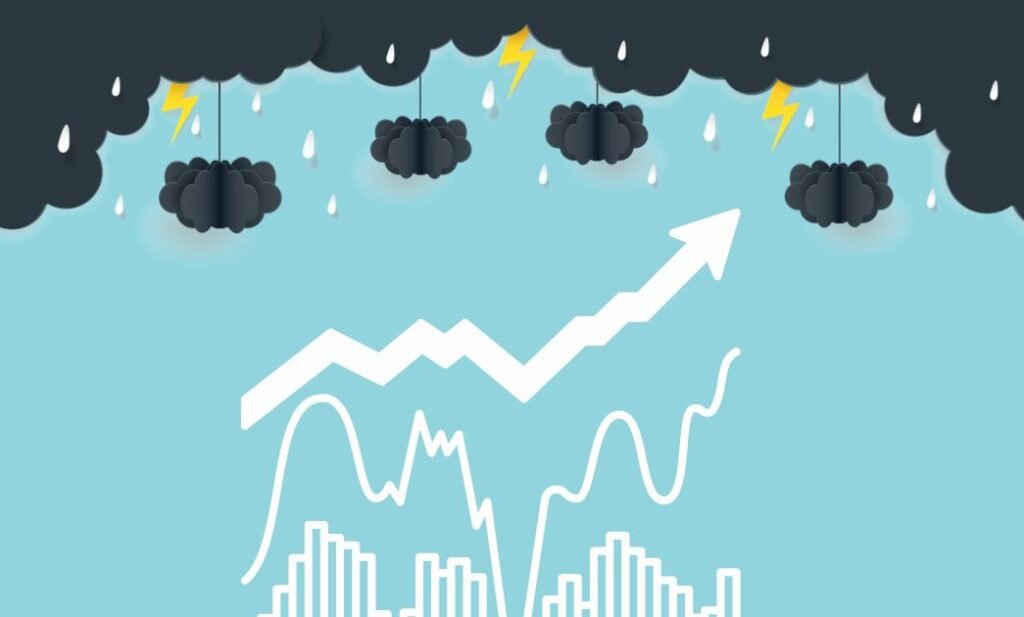Did you know that monsoons could directly impact rural demand and consumption, a country’s GDP, and even its stock markets?
Yes, that’s right!
Stock markets and monsoons share a very interesting relationship. A timely and bountiful monsoon can lead to increased agricultural production and higher demand for goods and services, ultimately boosting the overall economy. But what happens when there is a dry season? Well, the opposite. Delayed arrivals or insufficient rainfall can affect crop production and the rural economy, directly impacting market sentiments, in turn, the stock markets!
Let’s find out more about the interesting relationship between monsoons and stock markets.
How monsoon can impact Nifty?
So, to understand how monsoon can impact stock markets, or particularly Nifty in our case, let’s first decode the composition of the Nifty index or Nifty 50.
The Nifty 50, a benchmark stock market index, comprises the 50 largest listed companies. But here’s the catch – This index relies heavily on three sectors – Banks, FMCG (Fast-Moving Consumer Goods), and Automobiles. In fact, these sectors together make up more than 50% of the Nifty 50!
In a situation with deficient rainfall, food production may naturally be low. This may lead to high food inflation and scarcity. FMCG, a sector directly related to food production, may witness a severe fall in demand and profit margins. These negative market sentiments may directly reflect on FMCG stocks listed on the index. The reverse may also hold true if monsoons are adequate.
The same also applies to the banking and automobile sectors. A bad monsoon can make banks wary of lending and further boil negative sentiments. Also, as food inflation increases, the RBI (Reserve Bank of India) may be forced to take some tough steps, such as increasing interest rates, which may send ripples across the markets. Phew!
The automobile industry is also directly affected by how this season plays out. A good monsoon prediction may increase demand for trackers and the transportation industry. On the other hand, a dry season can decrease demand, directly hampering the stocks on the index.
Guess what, it’s just not these three sectors; monsoon season can dictate the mood for many other sectors. Industries like fertilisers, chemicals, and seeds generally benefit from good monsoons, contributing to the overall positive sentiment in the stock market. Conversely, bad monsoons can lead to farmer defaults and credit issues in microfinance, causing concerns in the financial sector particularly, and the overall markets too. Heavy rainfalls can also disrupt the power supply and transportation, negatively affecting the performance of infrastructure and energy-related stocks.
Also, you must remember this – It’s not just about the quantity of rainfall; its distribution also matters! If the rainfall is concentrated in a few regions, it can cause flooding and crop damage and vice-versa.
All said it’s important to note that the correlation between the monsoons and the stock market isn’t always predictable or straightforward. Other factors, including political events, global economic conditions etc., can influence the stock market.
Over the years, though, the stock market has become more resilient to monsoon variations. Improved tech, weather forecasts, and high-tech irrigation have reduced the heavy dependence on monsoon moods! So, while monsoons still matter, their impact may not be as severe as before.
Conclusion
As we sit through the monsoon season, a common question on the mind of many investors and traders is this – How much rainfall is expected this year, what areas will receive a good monsoon and so on. These questions are not random thoughts – India is an agrarian economy and directly contributes to the Indian GDP and employment. A dry year can decrease food production, increase inflation and cause a domino effect in the primary and secondary markets. Currently, many states reel under the effect of severe rainfall. How production and demand will be impacted is yet to be determined.
